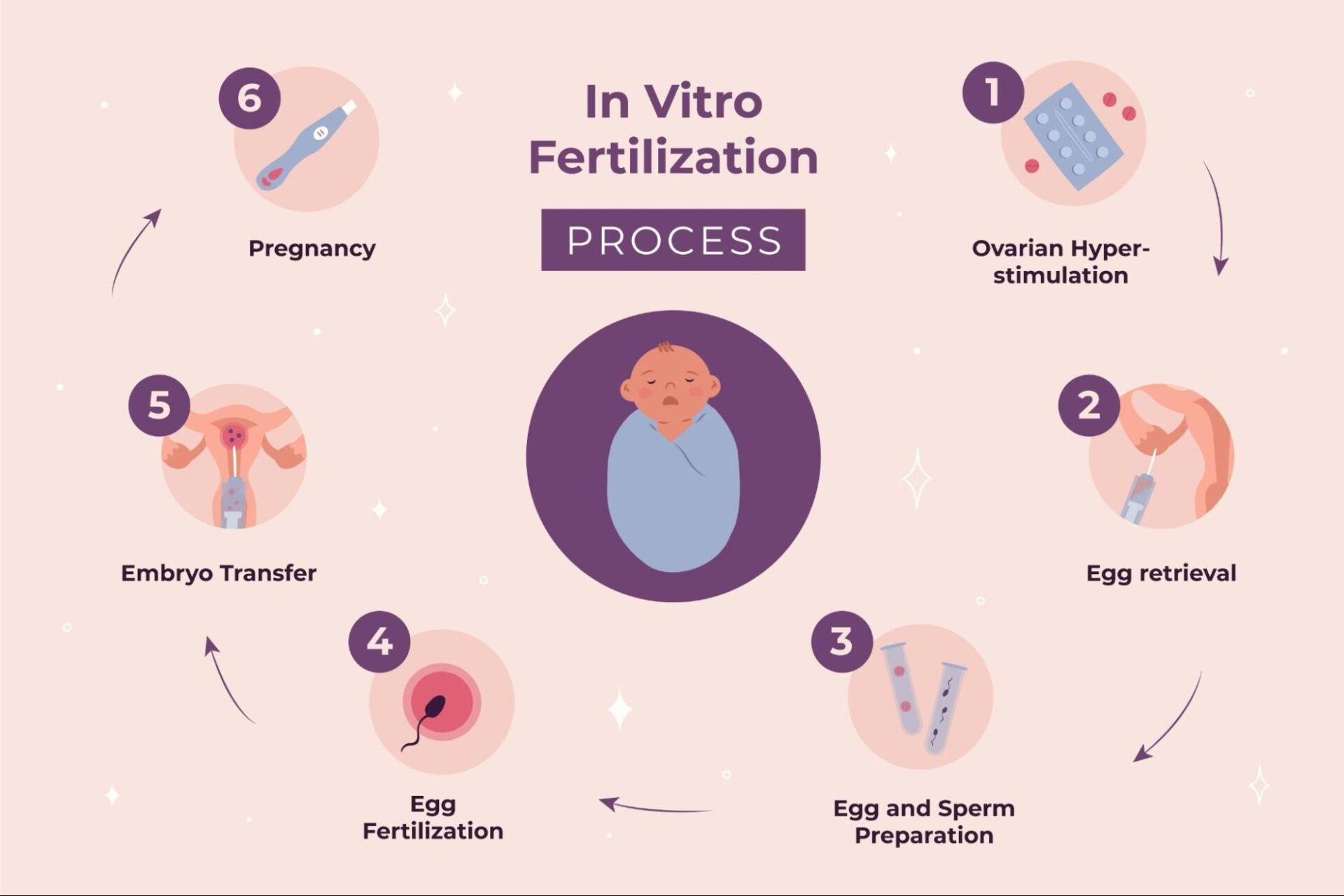
Is IVF Covered by Insurance? Your Ultimate Guide to Costs, Coverage, and Clever Hacks
April 1, 2025Your IVF Due Date: Everything You Need to Know About Calculating Your Baby’s Arrival
Hey there! If you’re reading this, chances are you’re either knee-deep in the exciting (and maybe a little nerve-wracking) world of IVF or you’re just curious about how it all works. Either way, welcome! Today, we’re diving into something super cool: how to figure out your due date when you’re pregnant through in vitro fertilization (IVF). It’s not quite the same as a “regular” pregnancy, and there’s a lot more to it than you might think. So, grab a snack, get comfy, and let’s explore this together!
When you’re expecting a baby via IVF, one of the first questions that pops up is, “When will my little one arrive?” Unlike natural pregnancies, where due dates are often a bit of a guessing game, IVF gives you a head start with some pretty precise info. But it’s not just about counting days on a calendar—there’s a mix of science, a dash of mystery, and even a few surprises along the way. We’ll break it all down, share some insider tips, and even spill a few secrets that most people don’t talk about. Ready? Let’s get started!

Why IVF Due Dates Are Different (And Kinda Cool!)
So, here’s the deal: when you get pregnant the usual way, doctors base your due date on the first day of your last menstrual period (LMP). It’s like a starting line for a race that lasts about 40 weeks. But with IVF? That starting line moves. Why? Because IVF skips some of the natural steps—like ovulation—and jumps straight to the good stuff: fertilization and embryo transfer. This makes your due date calculation a little more exact, and honestly, pretty fascinating.
The Magic of Knowing the Exact Moment
Picture this: in a natural pregnancy, no one knows the exact second an egg meets sperm. It’s like trying to guess when a shooting star will zip by. But with IVF, doctors know precisely when your embryo was created in the lab and when it was transferred into your uterus. That’s a game-changer! Instead of guessing, they use this info as the anchor for your due date. Pretty neat, right?
Fresh vs. Frozen: Does It Matter?
Here’s something you might not know: whether your embryo was fresh or frozen can tweak the timeline a bit. A fresh embryo transfer happens just days after your eggs are fertilized, while a frozen embryo transfer (FET) might happen weeks, months, or even years later. The cool part? The due date calculation adjusts based on how “old” the embryo was when it was transferred. For example:
- Day 3 embryos are three days old.
- Day 5 embryos (called blastocysts) are five days old.
This little detail shifts your due date by a couple of days, and we’ll show you how to crunch those numbers later!
A Peek Behind the Scenes
Ever wonder what’s happening in the lab while you’re waiting? Embryologists—those unsung heroes of IVF—are busy watching your embryos grow under microscopes. They’re like baby whisperers, making sure everything’s on track before the big transfer day. Fun fact: some clinics even use time-lapse cameras to spy on embryos 24/7. It’s like a reality show for cells, and it helps them pick the strongest contenders for your pregnancy!
How to Calculate Your IVF Due Date Like a Pro
Okay, let’s get to the good stuff: how do you actually figure out when your baby’s arriving? It’s simpler than it sounds, and you don’t need to be a math genius to do it. Here’s the step-by-step scoop.
The Basic Formula Everyone Should Know
A full-term pregnancy is about 40 weeks—or 280 days—from the day of conception. But since IVF tracks things differently, we tweak that a bit. The magic number here is 266 days, which is how long it takes from fertilization to birth (assuming no early surprises!). Here’s how it works:
- Start with your transfer date. This is the day your embryo was placed in your uterus.
- Subtract the embryo’s age. Was it a Day 3 or Day 5 transfer? Subtract 3 or 5 days.
- Add 266 days. That’s your estimated due date!
For example:
- Transfer date: March 23, 2025
- Day 5 embryo: March 23 – 5 days = March 18
- Add 266 days: March 18 + 266 days = December 9, 2025
Boom! Your baby’s due date is December 9, 2025. Easy, right?
Day 3 vs. Day 5 Transfers: What’s the Difference?
Let’s break this down with a handy table:
| Transfer Type | Embryo Age | Days to Add | Example Transfer Date | Due Date |
|---|---|---|---|---|
| Day 3 | 3 days | 263 days | March 23, 2025 | December 11, 2025 |
| Day 5 | 5 days | 261 days | March 23, 2025 | December 9, 2025 |
See the two-day difference? It’s small but mighty—and it’s all because Day 5 embryos have a tiny head start in development.
Frozen Embryo Transfers: A Twist in the Tale
If you’re using a frozen embryo, the process is the same, but there’s a fun twist: your embryo might’ve been chilling (literally!) for a while. The age of the embryo when it was frozen is what counts. So, if it was frozen on Day 5 and thawed for transfer, you still subtract 5 days from the transfer date. It’s like time travel for embryos—how wild is that?
Step-by-Step Guide to Do It Yourself
Want to try it? Here’s a quick guide:
- Grab a calendar (or your phone—let’s be real, it’s 2025!).
- Mark your transfer date.
- Subtract your embryo’s age (3 or 5 days).
- Count forward 266 days from that new date.
- Circle your due date and celebrate—you’re a due-date detective!
Pro tip: There are online IVF due date calculators that do this for you. Just plug in your transfer date and embryo type, and voilà!

Surprising Factors That Can Shift Your Due Date
Here’s where it gets juicy: your due date isn’t set in stone. Even with IVF’s precision, a few curveballs can nudge it around. Let’s spill the tea on what might shake things up.
Multiples—Twins or More!
Did you know IVF ups your chances of twins or triplets? About 1 in 4 IVF pregnancies involves multiples, compared to 1 in 80 for natural ones. Why? Sometimes more than one embryo is transferred to boost success odds. But here’s the catch: multiples often arrive early.
- Twins: Around 36-37 weeks.
- Triplets: As early as 32-34 weeks.
So, if you’re expecting a duo or trio, your due date might slide up a bit!
Your Body’s Unique Rhythm
Even with IVF, your body has its own vibe. Things like your uterine lining or how fast the embryo implants can tweak the timeline. Nurse Practitioner Monica Moore once said, “IVF gives us a precise starting point, but every pregnancy dances to its own beat.” It’s like your baby’s already showing some personality!
Ultrasounds: The Reality Check
A few weeks after your transfer, you’ll get an early ultrasound. Doctors measure your baby’s “crown-to-rump” length (head to butt) to double-check the due date. Sometimes, it shifts by a few days if your little one’s growing faster or slower than expected. It’s not a big deal—just a fine-tuning!
The Stress Factor Nobody Talks About
Here’s a secret: stress can mess with your pregnancy vibes. Studies show that high stress might nudge babies to arrive a smidge early—not by much, but enough to notice. So, keep those zen vibes flowing with yoga, Netflix binges, or whatever chills you out.
Busting Myths About IVF Due Dates
There’s a ton of chatter out there about IVF pregnancies, and not all of it’s true. Let’s clear the air with some myth-busting fun!
Myth #1: IVF Babies Always Come Early
❌ False! Sure, multiples might speed things up, but singleton IVF babies are just as likely to hang out until 40 weeks as naturally conceived ones. A 2023 study from the American College of Obstetricians and Gynecologists found no big difference in delivery timing for single IVF pregnancies.
Myth #2: The Due Date Is 100% Accurate
❌ Nope! Even with IVF’s precision, only about 4% of babies arrive on their exact due date. Dr. Jessica Ryniec, an IVF expert, puts it this way: “We can get super close with IVF due dates, but babies love to keep us guessing.” It’s like they’re already planning their grand entrance!
Myth #3: Frozen Embryos Mess Up the Math
❌ Not true! Frozen embryos follow the same rules as fresh ones. Their “age” at transfer is what matters, not how long they’ve been on ice. So, no need to overthink it!
Insider Tips to Nail Your IVF Due Date Prep
Now that you’ve got the basics, let’s level up with some practical advice. These are the hacks you won’t find in every article—straight from the trenches of IVF life!
Track It Like a Boss
✔️ Get a planner or app. Jot down your transfer date, embryo type, and due date. Apps like “What to Expect” or “Ovia Pregnancy” even send you weekly updates tailored to IVF timelines.
✔️ Snap a pic. Take a photo of your embryo under the microscope if your clinic offers it—it’s a cool keepsake and a reminder of Day 0!
Ask the Right Questions
When you’re at your clinic, don’t be shy! Here’s what to ask:
- “Was my embryo Day 3 or Day 5?”
- “Does my transfer date match the due date you calculated?”
- “What if I’m having twins—how does that change things?”
Knowledge is power, and your doctor’s happy to spill the details.
Celebrate the Milestones
IVF pregnancies come with unique moments. Why not make them special?
- Transfer Day Party: Toast with sparkling juice after your embryo’s in.
- Due Date Countdown: Start a fun ticker 261 or 263 days out (depending on your transfer type).
- Ultrasound Reveal: Frame that first blurry pic of your baby-to-be!
Prep for the Unexpected
✔️ Pack early. Since multiples or surprises can shift your due date, have your hospital bag ready by week 35.
✔️ Talk to your boss. If you’re working, clue them in early—IVF due dates might flex a little.
The Science Behind It: What’s New in 2025
Science doesn’t sleep, and IVF research is always dropping fresh info. Here’s the latest scoop as of March 23, 2025, to keep you in the know.
AI-Powered Due Date Precision
Researchers are now using artificial intelligence to predict due dates even better. A 2024 study from Stanford showed AI can analyze embryo growth patterns and tweak due dates with 95% accuracy—way better than the old-school 80%. It’s like having a crystal ball for your pregnancy!
Embryo Grading Secrets
Ever heard of embryo grading? It’s how embryologists rank embryos based on their looks (yep, they’re judgy like that!). New tech in 2025 uses microscopes with AI to spot tiny details—like cell symmetry—that might hint at implantation speed. Faster implantation could mean a slightly earlier due date. Cool, huh?
The Stress Study Nobody Saw Coming
A 2025 report from the Journal of Reproductive Medicine found something wild: moms with lower cortisol (stress hormone) levels during IVF had babies that stuck closer to their predicted due dates. It’s early research, but it’s a nudge to keep calm and carry on!
Real-Life Stories: IVF Due Dates in Action
Let’s get personal for a sec. Hearing from real people makes this all feel less like a science project and more like a journey. Here are a couple of tales from the IVF trenches.
Sarah’s Twin Surprise
Sarah, a 34-year-old from Texas, had a Day 5 FET on June 10, 2024. Her calculated due date was March 27, 2025. But at her 8-week ultrasound—surprise!—twins! Her doctor adjusted the timeline, and her boys arrived on March 12, 2025, two weeks early. “I was ready for one, but two? Total shock—and total joy!” she says.
Mike’s Frozen Embryo Adventure
Mike and his wife used a frozen Day 3 embryo transferred on January 15, 2025. Their due date? October 9, 2025. “We’d waited two years to use that embryo,” Mike shares. “Counting down those 263 days felt like forever, but our daughter arrived right on time.” Bonus: they threw a “thaw party” the day before transfer—because why not?

Your IVF Due Date Questions, Answered
Got questions? We’ve got answers! Here’s a quick Q&A based on what real people wonder about.
Can My Due Date Change?
Yep! Ultrasounds or unexpected twists (like multiples) might shift it by a few days. It’s normal, so don’t sweat it.
Are IVF Babies Bigger or Smaller?
No big difference! A 2024 study showed IVF singletons weigh about the same as naturally conceived babies—around 7 pounds on average.
What If I Forget My Transfer Date?
No worries—your clinic’s got it on file. Just give them a call, and they’ll hook you up with the details.
